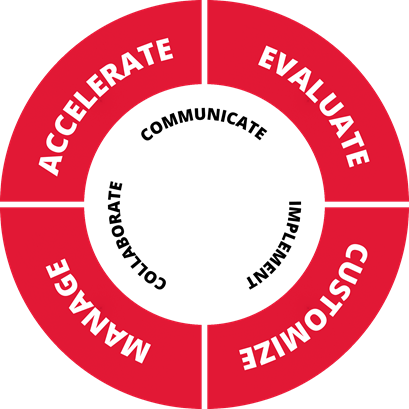What is IT Change Management?
Definition: Change management is a process for controlling the lifecycle of changes while minimizing disruption to an organization’s employees and IT services.
Things do fall apart. Printers jam, Wifi goes down, laptops die, and networks lag. That’s why we hire IT consultants. Repair and maintenance come with a cost, not the cost of hiring an IT vendor, but rather the cost of downtime, work disruption, and getting employee acceptance and buy-in.
When not carefully planned out, repairs and even standard upgrades can often cost more in lost productivity than the cost of repairs.
Change management focuses not only on maintenance and repair but on how a company and its employees are affected when changes take place. Change is hard on people, especially when it means learning a new process or when it affects someone’s job in unexpected ways.
There are multiple methods on how to implement change management. All of the methods have two things in common:
- There is an emphasis on how teams and employees are affected by changes.
- The processes used must minimize downtime and impact to ongoing operations.
When you decide to implement change management, be prepared to encounter a lot of new acronyms. Never fear, we will decode them for you.
IT Change Management Terminology
Here’s what some of those confusing acronyms mean:
ITIL (Information Technology Infrastructure Library): The library is the framework used to deliver change management, including strategic planning, delivery, lifecycle, and maintenance.
ITSM (Information Technology Service Management): The set of systems used by a team or company to improve and optimize IT use.
CAB (Change Advisory Board): This is a team, usually made up of various business and IT members, that analyze change requests, advising on impact and best practices. The best CABs are multidisciplinary, providing several perspectives to consider.
ECAB (Emergency Change Advisory Board): Some organizations also have a CAB that only convenes to address emergencies and disasters.
RFC (Request for Changes): Some organizations have a formal proposal system for changes, often referred to as RFCs.
What does an IT Change Management process look like?

Our change management model has three critical actions: Communicate, Implement, and Collaborate.
- Evaluate the Process – No two organizations have the same needs, and that’s what the evaluation uncovers. The results of the evaluation leads directly into the next step: Customizing.
- Customize the Change – Match your organization’s unique needs. We don’t believe in a template that applies to everyone. Every organization has many variables in technology, headcount, tech needs, industry needs, etc.
- Manage People Risk – We know this is one of the most critical components. Some people don’t handle change well. We need to manage all employee’s expectations, needs, and worries.
- Accelerate the Process – Once we handle the organization’s needs, employees’ time, costs and minimize disruption, we can get things going.
Ready to work with a trusted expert in change management? Contact Us Today!
For more information about gaining a competitive advantage with digital transformation, contact Red Level today.
Related Posts
Keeping up with technology is expensive. But for most businesses, ...
Over the weekend, some organizations using Microsoft Entra ID experienced ...
When was the last time you took a close look ...





